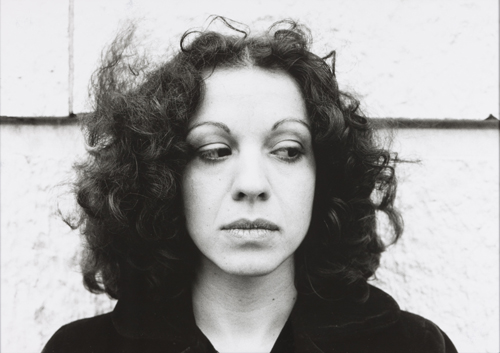Search
To search for an exact match, type the word or phrase you want in quotation marks.
A*DESK has been offering since 2002 contents about criticism and contemporary art. A*DESK has become consolidated thanks to all those who have believed in the project, all those who have followed us, debating, participating and collaborating. Many people have collaborated with A*DESK, and continue to do so. Their efforts, knowledge and belief in the project are what make it grow internationally. At A*DESK we have also generated work for over one hundred professionals in culture, from small collaborations with reviews and classes, to more prolonged and intense collaborations.
At A*DESK we believe in the need for free and universal access to culture and knowledge. We want to carry on being independent, remaining open to more ideas and opinions. If you believe in A*DESK, we need your backing to be able to continue. You can now participate in the project by supporting it. You can choose how much you want to contribute to the project.
You can decide how much you want to bring to the project.

Bit by bit MACBA is slowly revising the work of artists linked to what has been called Catalan conceptualism. Now it is the turn of Àngels Ribé. An artist surrounded by a certain mythical aura for the little known about her. The revision of artistic practices in the seventies seems necessary once more, given their actuality and as it makes it possible to establish parallels between artists from different latitudes.
Àngels Ribé formed part of a generation of artists that was considerably more heterogeneous than it has come to seem in the last few years. Very disparate works and attitudes have come to be encompassed in Spain under the epitome “conceptual art”, which though it obviously differs considerably from its North-American namesake, which was understood as a movement, wasn’t even homogenous within its own context. Undoubtedly certain attitudes coincide, such as the demystification of the art object, the tendency towards dematerialisation, and above all, the use of new media (performance, video, installation…) and the taking of a critical stance regarding art and the traditional art system. However, when analysing individual practices, one can appreciate a wide variety of artistic positions, media and working processes that complicate enormously its adscription into a supposed movement, beyond the question of the epoch and the aura of novelty that encompasses them.
The exhibition of Àngels Ribé at MACBA is correct, it achieves what it sets out to do: visualizing the need to show what hasn’t been shown, exposing it to the public, to criticism and to the context. To place the work of Ribé in a position where it is possible for it to be revised, reconsidered and reinserted.
The little known about the work of Àngels Ribé is the result of a confluence of diverse variables. On the one hand, she belonged to a generation of artists that was sidelined by the cultural powers of the so called Transition, more interested in promoting pictorial practices, the exportation of certain geniuses and the institutional and commercial network of contemporary art. On the other, her voluntary departure, first to Paris and then in the seventies to the United States, which on the one hand removed her from the Catalan context of the time, but on the other made her a participant of what was occurring in New York. And finally, her condition as a “woman artist”, a double-edged category: a parameter for direct exclusion or relative inclusion by way of what is known as positive discrimination. As the definition of “woman artist” , implies a counter position to “artist”. And if artist is artist, woman-artist is not an artist but no-artist. Or at least that is how it seems to have been conceived for centuries within the hegemonic and patriarchal artistic tradition. Àngels Ribé knew this and because of it in the beginning only used to sign herself as A. Ribé.
The exhibition calls for what she produced to be contemplated for what it is, open to multiple readings, to different associations, to be reconsidered from different places and critical positions. In short, to approach it in the same way as one approaches the proposals of her male contemporaries. The question is always problematic. I say approach because in order to be able to go into a deeper analysis one can’t avoid a series of questions that place the artist as a producer into a wider and known context. When Àngels Ribé left Catalonia and began to produce, a woman in Spain couldn’t open a bank account or make long journeys without the permission of her father or her spouse. In this respect, Abigail Solomon-Godeau, in the exhibition catalogue, indicates quite rightly that any consideration of the work by women artists after the period 1968-1969 should begin with feminism, even before taking into consideration the specific characteristics of any particular work of art. Her point is appropriate, at least for the geographic and temporal context of the works of Ribé included in the exhibition.
Works that in the majority are presented in the space as reconstructions or with documentation. In the exhibition everything is materialised, which contrasts with the tendency towards dematerialization that characterised the time. Something in the work of Ribé tends to make material what it is impossible to materialize a desire to apprehend with the image what can’t be seen. This idea, that seems to be suggested in works such as “The Best Way of Expressing It” (1975), when a plumb line that hangs from the ceiling can’t be moved because the air from the fan doesn’t reach it, is made evident in pieces such as “Association 3” (1973), where the artist endeavours to give form to gravity, counteracting the effect of smoke that disappears into air. The question of geometry, crucial in her production, becomes the structure from which everything stems and which everything leans towards. Ribé evades representation and transcends it through suggestion. Inexistent lines that appear with clarity to those who contemplate them, intangible vanishing points that escape the predetermined frame and create angles, triangles, parallels and perpendiculars that invade the space and transcend the constriction of the material.
The surrounding space becomes more complex with variables that haven’t been contemplated arising in a priori forms. And when the artist inserts her own body, with multiple connotations, it establishes a tension, seeking and at times forcing an integration that has never previously been given. Distinct pieces show the problematical incorporation of this body into the space, exploring distinct forms of inhabiting it. In “Six Possibilities of Occupying a Given Space” (1973) Ribé concentrates on the constriction that is pre-established. The space is occupied but not lived in. And the body appears fragmented. In a sequence of six photographs, the fingers of a hand change place to show different possibilities for appropriating a space. The limitation is absolute: the importance is placed on the tiny margin available for manoeuvre, once the subjugation has been assumed.
The constrained body reappears in pieces such as “Can’t Go Home“ (1977), a prelude to Àngels Ribé’s return to Barcelona. This installation, that distances itself from the formal cleanness characteristic of previous works, explores the subordination of a feminine body to another and to a context. Its more narrative construction comes close to representation and breaks the visible-invisible dialectic that dominated the “geometric” pieces. The exhibition, through different works, echoes this derive that leads, in the last room, to a move towards the pictorial, a question that merits a separate analysis, bearing in mind the existence of similar cases within so-called conceptualism.

Maite Garbayo is a writer and researcher. Art history, feminist crticial theory and pyschoanalysis are a few of the tools of her trade. She combines her research and writing with periods of teaching. Currently, she is working on her doctoral thesis and is the editor of the magazine {Pipa}.
"A desk is a dangerous place from which to watch the world" (John Le Carré)